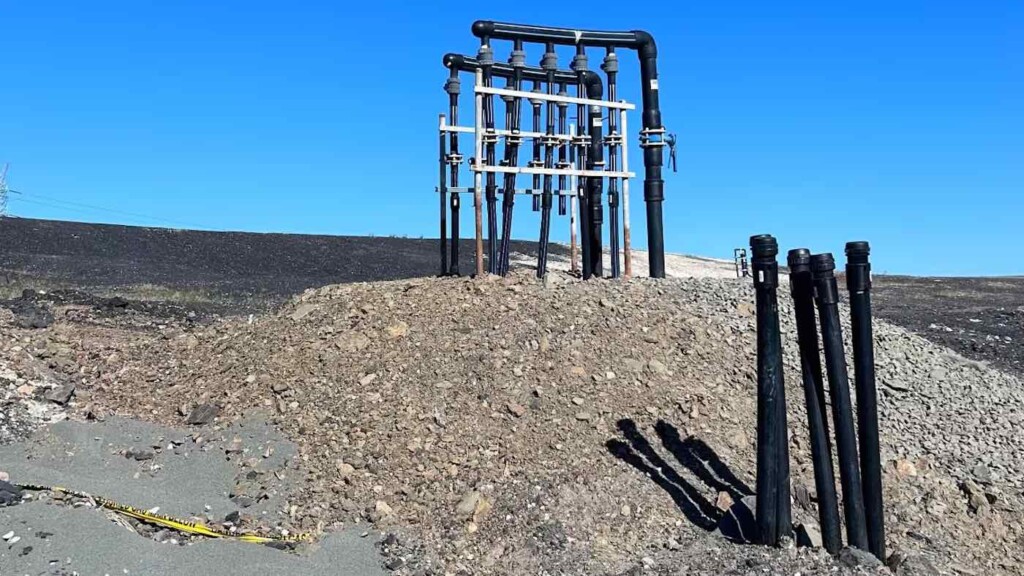Scientists Are Making Jet Fuel from Landfill Gas Aiming to Launch Circular Economy
Scientists Are Making Jet Fuel from Landfill Gas Aiming to Launch Circular Economy Good News Network


Sustainable Jet Fuel Created from Landfill Methane

Introduction
In a groundbreaking development, researchers from the University of Sydney have successfully developed a chemical process using plasma that has the potential to produce sustainable jet fuel from methane gas emitted from landfills. This innovation could pave the way for a low-carbon aviation industry, aligning with the Sustainable Development Goals (SDGs) set by the United Nations.
Potential Impact
The researchers believe that if their cost-effective and widespread process is implemented, all landfills worldwide could become energy sources. This would address two significant challenges simultaneously: reducing greenhouse gas emissions from landfills and providing a sustainable fuel source for the aviation sector.
Methane Emissions and Climate Change
Methane is a highly potent greenhouse gas, with a concentration in the atmosphere currently two-and-a-half times greater than pre-industrial levels. Although methane only remains in the atmosphere for about nine years, its emissions are steadily increasing. Waste emissions and the burning of fossil fuels are major contributors to methane concentration, exacerbating climate change.
Australia recently joined an international methane mitigation agreement with the United States, the European Union, Japan, and the Republic of Korea, highlighting the global concern over methane emissions.
Conversion Process
The process involves extracting methane from landfill sites using a mechanism called a “methane well.” The extracted gas is then subjected to non-thermal plasma, an electricity-driven technology that excites the gas at low temperatures and atmospheric pressure. This plasma discharge within forming gas bubbles facilitates the conversion of methane into value-added products. The process is energy-efficient and compatible with renewable energy sources, aligning with SDG 7 (Affordable and Clean Energy).
Environmental and Commercial Benefits
Modern landfill facilities already capture and combust their gas emissions for electricity generation. However, the researchers’ process creates a more environmentally impactful and commercially valuable product. By converting methane into sustainable jet fuel, the need for traditional and sustainable jet fuels that contribute to atmospheric emissions is eliminated.
Global Impact
Landfill emissions worldwide are estimated to be 10-20 million metric tonnes of greenhouse gases per year, comparable to the emissions of the global energy sector. The aviation industry currently accounts for approximately 3% of global emissions. Implementing this closed-loop fuel system based on existing landfill emissions would significantly reduce the sector’s carbon footprint, contributing to SDG 13 (Climate Action).
Conclusion
The University of Sydney’s innovative chemical process using plasma to convert landfill methane into sustainable jet fuel has the potential to revolutionize the aviation industry. By addressing the challenges of methane emissions and sustainable fuel sources, this breakthrough aligns with several SDGs, including SDG 7 (Affordable and Clean Energy), SDG 13 (Climate Action), and SDG 14 (Life Below Water).
SDGs, Targets, and Indicators
1. Which SDGs are addressed or connected to the issues highlighted in the article?
- SDG 7: Affordable and Clean Energy
- SDG 9: Industry, Innovation, and Infrastructure
- SDG 11: Sustainable Cities and Communities
- SDG 13: Climate Action
2. What specific targets under those SDGs can be identified based on the article’s content?
- SDG 7.2: Increase substantially the share of renewable energy in the global energy mix.
- SDG 9.4: Upgrade infrastructure and retrofit industries to make them sustainable, with increased resource-use efficiency and greater adoption of clean and environmentally sound technologies and industrial processes.
- SDG 11.6: Reduce the adverse per capita environmental impact of cities, including by paying special attention to air quality and municipal and other waste management.
- SDG 13.2: Integrate climate change measures into national policies, strategies, and planning.
3. Are there any indicators mentioned or implied in the article that can be used to measure progress towards the identified targets?
- Percentage of renewable energy in the global energy mix.
- Investment in infrastructure and industries for sustainability.
- Air quality in cities.
- Emissions reduction from landfill methane.
Table: SDGs, Targets, and Indicators
| SDGs | Targets | Indicators |
|---|---|---|
| SDG 7: Affordable and Clean Energy | 7.2: Increase substantially the share of renewable energy in the global energy mix. | Percentage of renewable energy in the global energy mix. |
| SDG 9: Industry, Innovation, and Infrastructure | 9.4: Upgrade infrastructure and retrofit industries to make them sustainable, with increased resource-use efficiency and greater adoption of clean and environmentally sound technologies and industrial processes. | Investment in infrastructure and industries for sustainability. |
| SDG 11: Sustainable Cities and Communities | 11.6: Reduce the adverse per capita environmental impact of cities, including by paying special attention to air quality and municipal and other waste management. | Air quality in cities. |
| SDG 13: Climate Action | 13.2: Integrate climate change measures into national policies, strategies, and planning. | Emissions reduction from landfill methane. |
Note: The indicators listed are inferred from the article’s content and may not be explicitly mentioned.
Copyright: Dive into this article, curated with care by SDG Investors Inc. Our advanced AI technology searches through vast amounts of data to spotlight how we are all moving forward with the Sustainable Development Goals. While we own the rights to this content, we invite you to share it to help spread knowledge and spark action on the SDGs.
Fuente: goodnewsnetwork.org

Join us, as fellow seekers of change, on a transformative journey at https://sdgtalks.ai/welcome, where you can become a member and actively contribute to shaping a brighter future.







